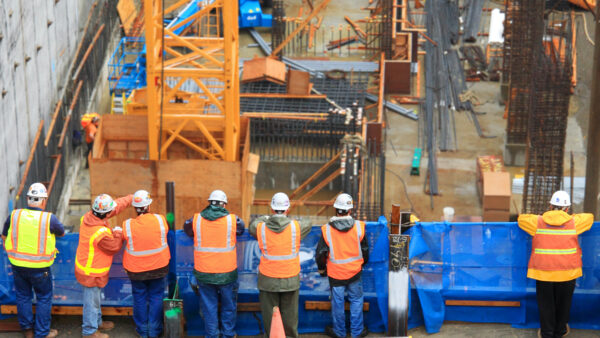Claire Barwick offers some advice on basement excavations.
The recent trend for basement excavations on so called “Iceberg homes” can have potentially damaging legal consequences as Ruby Wax and Rachel Johnson found out when they secured a rare victory by blocking financier Mark Hawtin’s plans to create a vast underground extension by digging under a public road in Notting Hill.
Basement conversions bring work for construction firms – these are long and complex jobs so are potentially lucrative, but they can also involve water tables and other complex issues. Failure to do the work properly and cement a contractual relationship between subcontractors could mean trouble further down the line.
A total of 72% of basement constructions are within the London boroughs. Earlier this year Kensington & Chelsea council published new draft rules to limit basements to a single storey and impose much tighter limits on how far they can extend under the garden area, following a surge in applications as owners have sought to bypass planning restrictions on changes to their homes above ground by extending below ground.
The increasing popularity for basement extensions and renovations, combined with changing weather patterns and a push for more sustainable urban drainage, have meant that basements present an ongoing risk. Legal claims regarding basements built since 2005 have cost the industry nearly £21m.
Research shows that over a quarter of sites surveyed revealed high or unknown water tables, yet proposed unsuitable construction solutions.
Research shows that over a quarter of sites surveyed revealed high or unknown water tables, yet proposed unsuitable construction solutions. The NHBC has announced plans to revise its guidance on basements over the coming months and to work closely with the industry to improve basement design and construction.
Recent large losses have involved properties adjacent to the deck surface suffering from rising damp and failed tanking where the membrane was cut to allow for drainage.
While tanking defects account for nearly two-thirds of claims, podium slabs share some of the blame. Podium decks generally have a greater exposure to the environment. The below-basement performance is critical to the surface water drainage and waterproofing system to prevent leaking. Drainage maintenance risks and potential risk of perched water – a reservoir of water created during the construction of the basement – must be taken into account at the design stage.
NHBC advises completing a desk study and ground investigation report as the water table is critical to the structural design of a basement, assessment of buoyancy risks and the selection of the waterproofing system.
Waterproofing measures should be designed on the basis of ground water to the full height of the retained ground, or on advice from a geotechnical expert regarding geology and hydrogeology. If tanking is being considered, the waterproofing of the basement must be continuous right to the outside of the building and that there is a cavity tray to prevent bridging which is sealed to the basement waterproofing. Basement waterproofing should also be checked to ensure it can withstand large loads from the walls above.
The NHBC is taking the issue seriously. After its research also revealed that in over three-quarters of claims, the site notification and initial notice had not been completed correctly when declaring basement construction it is now requiring builders to declare basement construction on the SNIN form as part of its risk management process. One of its project managers will be involved in any basement development to assess the proposals and assist in achieving satisfactory construction. It is advised that sites with basement or semi-basements should be clearly identified on the SNIN when the application for a Buildmark warranty is made.
In summary, those considering a basement excavation need to:
- Ensure podium decks have a suitable drainage systems with allowance for maintenance;
- Ensure adjacent surface water catchment areas and surrounding ground water flows are limited;
- Ensure proposals to use basements are identified when making the application;
- Ensure proposals comply with BS 8102:2009 “Code of Practice for protection of below ground structures against water from the Ground”;
- Complete a desk study and ground investigation report, clearly indicating ground water table risks or design for the worst-case scenario;
- Ensure waterproofing junctions are detailed.
In February 2012, Lord Selsdon launched the Subterranean Development Bill to establish a code of practice for what still feels like a Wild West underground gold rush. The Bill has already been passed by the House of Lords, and Lord Selsdon hopes the proposed draft regulations will be published by the DCLG imminently. Whether that will be enough remains to be seen.
Claire Barwick is an associate with Brachers www.brachers.co.uk








